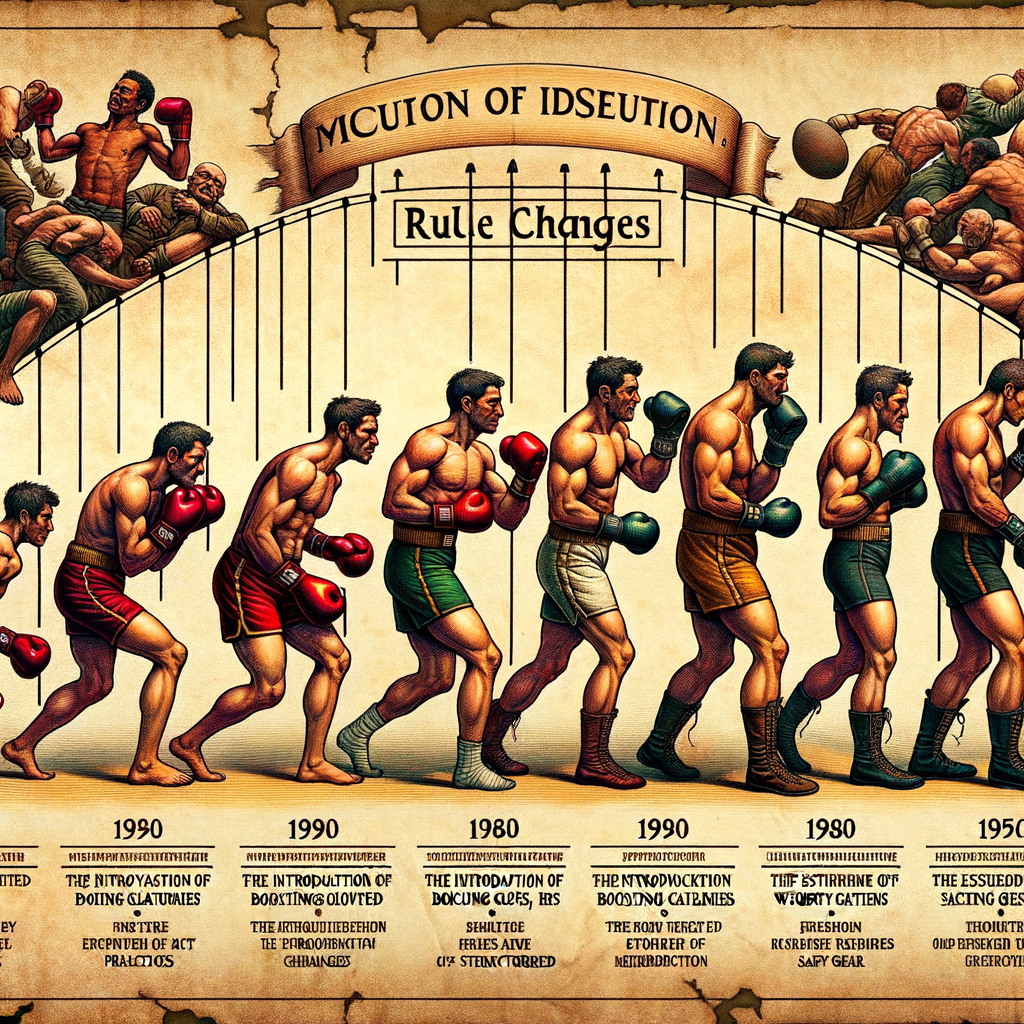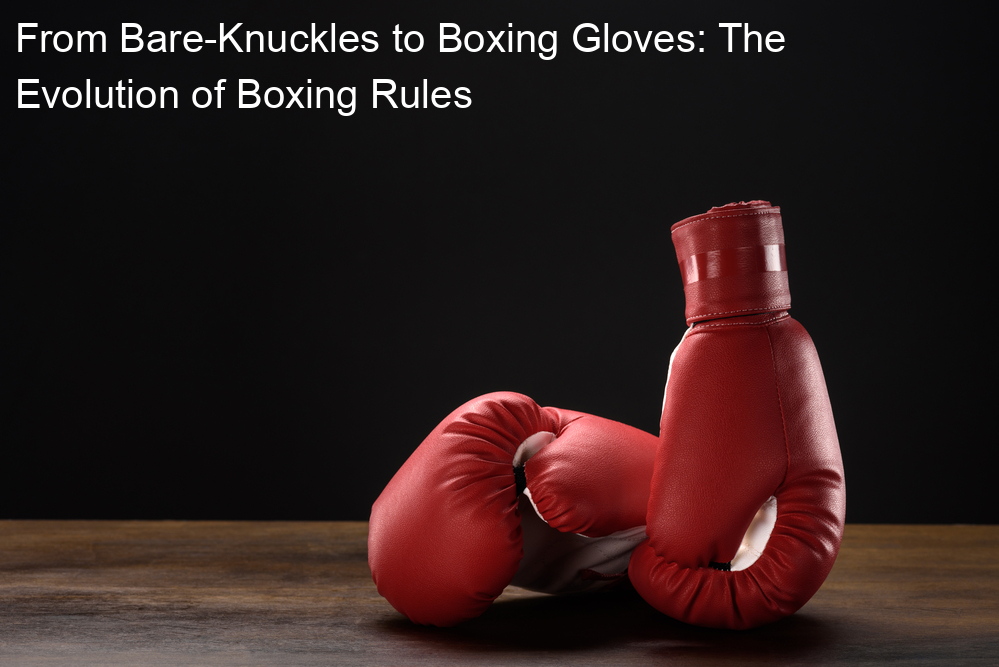
Introduction
Welcome to our exploration of the fascinating world of boxing. This sport, which has been around for centuries, has a rich and varied history. It’s not just about the punches and the knockouts; it’s about the evolution, the rules, and the people who have shaped it. Let’s dive into the journey of boxing, from its early days to the modern era.
- Overview of the Evolution of Boxing
- Importance of Understanding Boxing History
Boxing has come a long way since its inception. It began as a bare-knuckle, no-holds-barred contest in ancient times and has evolved into a regulated, globally recognized sport. The evolution of boxing is marked by significant changes in rules, equipment, and techniques. We’ll take a closer look at these changes and how they have shaped boxing as we know it today.
Understanding the history of boxing is crucial for several reasons. First, it helps us appreciate the sport more deeply, knowing the struggles and triumphs that have shaped it. Second, it provides context for the rules and regulations that govern boxing today. Finally, it allows us to see how boxing has influenced and been influenced by broader societal changes. By delving into boxing history, we gain a richer understanding of this captivating sport.
So, whether you’re a boxing enthusiast, an aspiring boxer, or just curious about the sport, this blog post will provide you with valuable insights. Let’s embark on this journey together, exploring the history and evolution of boxing.
Boxing History: The Early Days
The history of boxing is a fascinating journey that takes us back to the early days when it was a bare-knuckle, no-holds-barred sport. Let’s delve into the origins of this popular sport.
Bare-knuckle Brawls History
Before the invention of boxing gloves, fighters used to engage in bare-knuckle brawls. These were intense, brutal, and often dangerous encounters. Let’s explore the history of these early boxing matches.
- Origin and early practice of bare-knuckle boxing
- Rules and regulations during the bare-knuckle era
The origins of bare-knuckle boxing can be traced back to ancient civilizations. The Greeks, for instance, included boxing in the Olympic Games as early as 688 BC. However, the sport was much different back then. There were no rounds, no weight classes, and most importantly, no gloves. Fighters would wrap their hands in leather straps for some protection, but the fights were still incredibly brutal.
During the bare-knuckle era, boxing was governed by what was known as the London Prize Ring Rules. These rules, introduced in 1743, were the first attempt to provide some structure and safety to the sport. They stipulated that a round would end when a fighter was knocked down, and that the fight would end when a fighter could not get up after 30 seconds. However, there were still no gloves, and fights could last for hours until one fighter was unable to continue.
In the table below, we summarize the key differences between bare-knuckle boxing and modern boxing.
| Bare-Knuckle Boxing | Modern Boxing |
|---|---|
| No gloves, fighters wrapped their hands in leather straps | Fighters wear padded gloves |
| No rounds, fights could last for hours | Fights are divided into timed rounds |
| London Prize Ring Rules governed the sport | Marquess of Queensberry Rules govern the sport |
As we can see, boxing has come a long way from its early days. The introduction of gloves and the establishment of structured rules have made the sport safer and more organized. However, the spirit of competition and the thrill of the fight remain as strong as ever.
Evolution of Boxing: Transition from Bare-knuckles to Gloves
The sport of boxing has seen numerous changes over the years, one of the most significant being the transition from bare-knuckle boxing to the use of gloves. This change not only altered the way the sport was played but also brought about a shift in boxing rules and techniques.
Changes in Boxing Rules
With the introduction of gloves in boxing, the sport underwent a significant transformation. Let’s delve into the details of these changes.
- Introduction of gloves in boxing
- Impact of gloves on boxing rules and techniques
Boxing gloves were introduced in the late 19th century, primarily as a safety measure to protect the hands of the boxers. Before this, boxing was a bare-knuckle affair, which often resulted in severe injuries. The use of gloves made the sport safer and more regulated.
The introduction of gloves brought about a change in boxing rules and techniques. With gloves, boxers could now throw punches with more force without the fear of injuring their hands. This led to the development of new boxing techniques and strategies. For instance, the ‘jab’ and ‘cross’ punches became more prevalent with the use of gloves.
Moreover, the use of gloves led to the introduction of weight classes in boxing. This was done to ensure fairness in the sport, as gloves added weight to the boxer’s hands. Today, there are several weight classes in boxing, ranging from flyweight to heavyweight.
In conclusion, the transition from bare-knuckles to gloves has had a profound impact on the sport of boxing. It has made the sport safer, more regulated, and more strategic, thereby enhancing its appeal to a wider audience.
Modern Boxing Regulations: The Marquess of Queensberry Rules
Boxing, a sport that has been around for centuries, has seen a lot of changes in its rules and regulations. The most significant of these changes came in the form of the Marquess of Queensberry Rules. Let’s delve into the history of these rules and understand how they have shaped modern boxing.
History of Boxing Rules
The rules of boxing have evolved over time, from the bare-knuckle fights of the early days to the more regulated sport we see today. The turning point in this evolution was the introduction of the Marquess of Queensberry Rules.
- Introduction and adoption of the Marquess of Queensberry Rules
- Key changes brought by the Marquess of Queensberry Rules
The Marquess of Queensberry Rules were introduced in 1867 by John Chambers, under the patronage of the Marquess of Queensberry. These rules were designed to make boxing safer and more civilized. They were quickly adopted in most boxing matches, marking a significant shift from the brutal, bare-knuckle fights of the past.
The Marquess of Queensberry Rules brought several key changes to boxing. The most notable of these was the mandatory use of gloves. This rule was introduced to reduce the risk of serious injury to the fighters. Another important change was the introduction of three-minute rounds, with a one-minute rest period between rounds. This gave fighters a chance to recover and strategize during the fight. The rules also stated that a downed fighter had to get up within ten seconds, or they would lose the match. This rule was designed to prevent fighters from taking excessive punishment.
In conclusion, the Marquess of Queensberry Rules have had a profound impact on the sport of boxing. They have made the sport safer for the fighters and more enjoyable for the spectators. Today, these rules form the basis of modern boxing regulations.
| Rule | Description |
|---|---|
| Use of gloves | Mandatory use of gloves to reduce the risk of serious injury. |
| Three-minute rounds | Introduction of three-minute rounds with a one-minute rest period between rounds. |
| Downed fighter rule | A downed fighter has to get up within ten seconds, or they lose the match. |
Boxing Regulations Evolution: Safety Measures and Regulations
Boxing, a sport that has been around for centuries, has seen significant changes in its rules and regulations. The primary aim of these changes has been to ensure the safety of the boxers. Let’s delve into the modern boxing rules and how they have impacted the sport.
Modern Boxing Rules
Modern boxing rules, often referred to as the Marquess of Queensberry Rules, have been designed to protect the health and safety of boxers. They have brought about a significant shift in the way boxing matches are conducted.
- Current safety measures in boxing
- Impact of modern regulations on boxing techniques and strategies
Today, boxing matches are governed by a set of stringent safety measures. These include mandatory use of gloves, mouthguards, and protective headgear in amateur boxing. Additionally, a ringside doctor is always present during matches to provide immediate medical attention if required. Boxers are also required to undergo regular health checks to ensure they are fit to fight.
Modern regulations have not only made boxing safer but also more strategic. The introduction of gloves, for instance, has led to the development of defensive techniques like blocking and parrying. It has also made the sport more spectator-friendly by reducing the risk of severe injuries.
In conclusion, the evolution of boxing regulations has played a crucial role in shaping the sport as we know it today. It has made boxing safer for the athletes and more enjoyable for the spectators. As the sport continues to evolve, we can expect further changes aimed at enhancing safety and promoting fair play.
Conclusion
In this article, we have journeyed through the fascinating evolution of boxing rules, from its early days to the present. Let’s summarize what we’ve learned and look ahead to the future of boxing regulations.
- Summary of the Evolution of Boxing Rules
- Future Prospects for Boxing Regulations
Boxing has come a long way since its inception. It started as a brutal sport with no rules or safety measures, often resulting in severe injuries and fatalities. The transition from bare-knuckle fights to the use of gloves marked a significant turning point. The introduction of the Marquess of Queensberry rules in the late 19th century brought about a standard set of rules, including the use of gloves, three-minute rounds, and a ten-second count for knockouts. Over time, additional safety measures and regulations were put in place to protect the boxers, such as mandatory medical check-ups, weight classes, and the use of protective gear.
Looking ahead, the future of boxing regulations is likely to continue to evolve with the primary focus on enhancing boxer safety. Advances in medical science and technology may lead to improved protective gear and more accurate methods for assessing a boxer’s fitness. There could also be changes in the rules to further reduce the risk of injuries, such as stricter enforcement of fouls and more stringent weight class regulations. While the sport of boxing will always carry some risk, the goal is to make it as safe as possible for those who choose to step into the ring.
As boxing fans, it’s important for us to understand and appreciate the rules that govern this sport. These rules not only shape the action we see in the ring but also protect the brave men and women who put their health on the line for our entertainment. Let’s look forward to a future where boxing continues to evolve, becoming safer and more exciting with each passing year.






